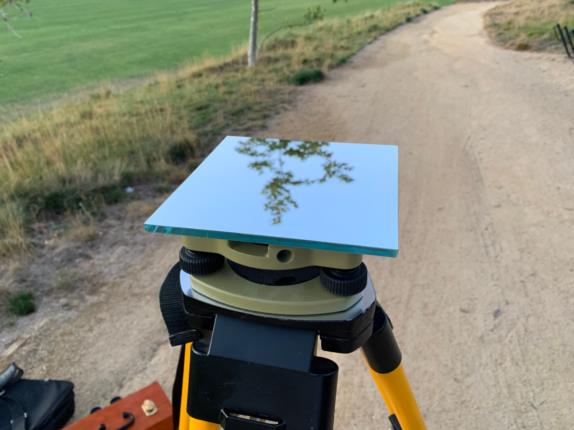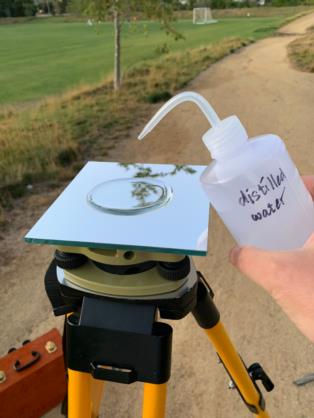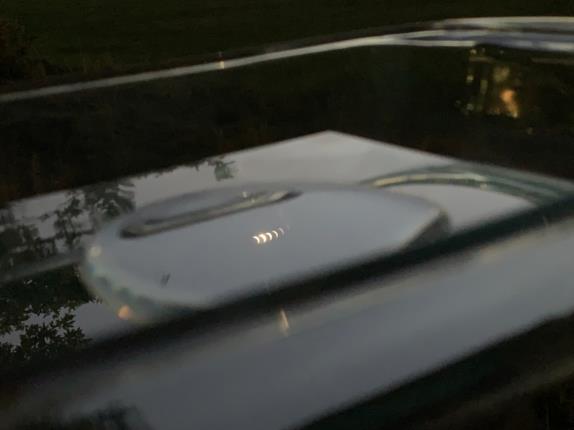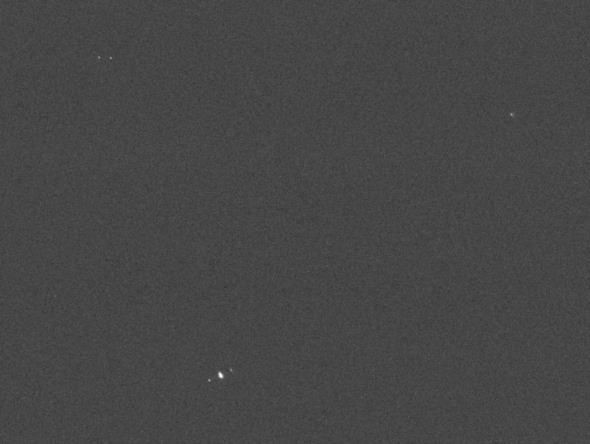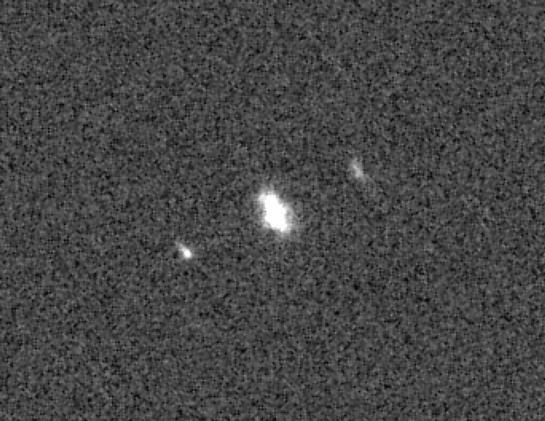
NavList:
A Community Devoted to the Preservation and Practice of Celestial Navigation and Other Methods of Traditional Wayfinding
From: Fred Hebard
Date: 2020 Jul 25, 17:28 -0400
On Jul 24, 2020, at 18:00, Peter Monta <NoReply_PeterMonta@navlist.net> wrote:I finally got a chance to try this out. It worked pretty well. In fact one can level up to a small fraction of an arcminute just by watching the image and turning the leveling screws, so the more finicky technique of using auxiliary sights to the dim ghost images can mostly be dispensed with.
The first photo shows the overall setup, a surveyor's tripod with a tribrach lightly clamped to the tripod head. Next is a closeup of the tribrach after rough leveling, as shown by the bubble level, which has 8-arcminute per 2 mm sensitivity. Next the mirror is placed on the tribrach screw covers; it is held down only by its own weight. Next, we have a puddle of water over the central portion of the mirror (I used distilled water to avoid spots upon evaporation).
As a quick test, the Moon was available, though fairly low in the sky. In the photo one can see five images of the Moon. The brightest one, second from the left, is the single-bounce image from the mirror. Furthest to the left is the single-bounce image from the water, and the others are multiple-bounce images, which get progressively dimmer. The mirror is now in a glass baking pan in an effort to cut down on wind ripples (it didn't help much). Next time I will use oil.
So far so good. Now we look at Vega. This time there are only three images, a bright one and two ghosts to either side. As with the Moon, the bright one is from the mirror, another is the image from the water surface, and the third is the triple-bounce image with the ray in the shape of a "W", star to mirror to water to mirror to eye. (The five-bounce image is too dim to see.) The two ghosts are of about equal brightness and considerably dimmer than Vega itself, which is why one needs a bright star for this initial leveling step.
Now it's just a matter of turning the tribrach screws until the three images merge into one. I was initially worried that this could not be done very accurately, but it turned out to be easy enough. One way is to get the adjustment in line with a single screw, put the images at a small but visible spacing (say 1 arcminute), reverse them, and finally set the screw to the estimated midpoint of screw rotation. Magnification is of course needed here, using either the sextant scope or a pair of binoculars.
The last images are the full camera frame of Vega and surroundings and a closeup of Vega with ghosts. Note the famous double-double star, epsilon Lyrae, in the upper left---its separation is about 3.5 arcminutes, a convenient reference for scale. I deliberately left the mislevel at about 4 arcminutes to show up well in the closeup.
Cheers,Peter


